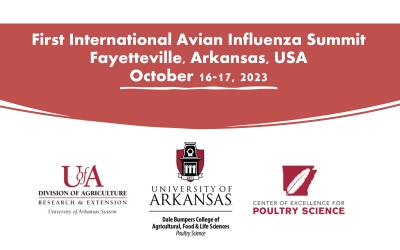HPAI H5N1 outbreak in Chile, 2022-2023
Authors: Alvaro G. Rubio
GMPC TOP
2023.
vol. 3, Iss. 1
pp:0-12
Doi: https://doi.org/10.51585/gtop.2023.1.0015

Abstract:
In Chile, from December 5, 2022, to date (August 30), 892 HPAI H5N1 HPAI-positive samples have been detected in wild birds, affecting 50 species, with 94 zones under control. To date, more than 35,000 wild birds are dead. In addition, 175 positive backyard bird premises have been detected, with more the 14,000 birds culling distributed in the 16 regions of the country in 97 zones under sanitary control. This is the event 4,775 registered in the WAHIS system. In addition, since March 13, 2023, the HPAI H5N1 virus was identified in a broiler genetics unit. Since that date, 12 outbreaks have been detected nationwide, which were distributed in 12 flocks (1.47\% of the total number of industrial flocks). Of these, 5 were in laying hens (1.4\% of the national total), 3 in broiler turkeys, 2 in turkey breeders, 1 in broilers, and 1 in broiler breeders. As a result of these outbreaks, the total number of susceptible birds was eliminated, corresponding to 1,479,433 birds. The procedure for each poultry outbreak is determined in the current AI Contingency Plan, which defines in general terms the establishment of a Zone under Sanitary Control (ZBCS), where a protection zone (3 km radius) and a surveillance zone of 7 km radius are defined, forming a total restriction zone of 10 km radius around each outbreak. For outbreaks in poultry, 7 ZBCS were created, concentrating all commercial outbreaks. commercial outbreaks. In some cases (as in ZBCS\_102 and 114), more than one outbreak was detected in each one. The actions carried out within each ZBCS in wildlife and in poultry and non-poultry are surveillance in the protection and surveillance zones, including clinical, molecular, and serological surveillance. Chile declared itself free of highly pathogenic avian influenza on August 22, 2023. On the other hand, on February 16, 2023, the first case of HPAI H5N1 in aquatic mammals was recorded, being a sea lion, the affected individual. To date, more than 20,000 sea lions have been stranded and died from the disease, and cases have been reported in other aquatic mammal species. In this outbreak, one human case has been reported in the north of the country and one terrestrial mammal (Geoffroy’s cat) in Patagonia. The Chilean A/H5 HA genes were genetically closest related to samples detected in Peru around the same period, and both Peruvian and Chilean strains derive from A/H5N1 viruses, causing widespread outbreaks in poultry and wild birds across North America. This outbreak corresponds to the first incursion of a HPAI H5 virus of Euro-North American lineage to South America, having serious consequences for wildlife, affecting backyard poultry and commercial flocks, which forces us to improve our capacities for risk assessment, surveillance, biosecurity, diagnosis, training and risk communication to poultry farmers, professionals and publishers in Chile as well as in Latin America.
Keywords:
HPAI, Chile, H5N1, Biosecurity, Risk assessment, Surveillance
Statistics:
Article Views: 525
PDF Download: 1